After achieving independence from Imperial Russia at the end of the First World War, Finland sought to become increasingly self-sufficient, and that included the development of a domestic arms industry. A number of new and even innovative weapons were designed and produced.
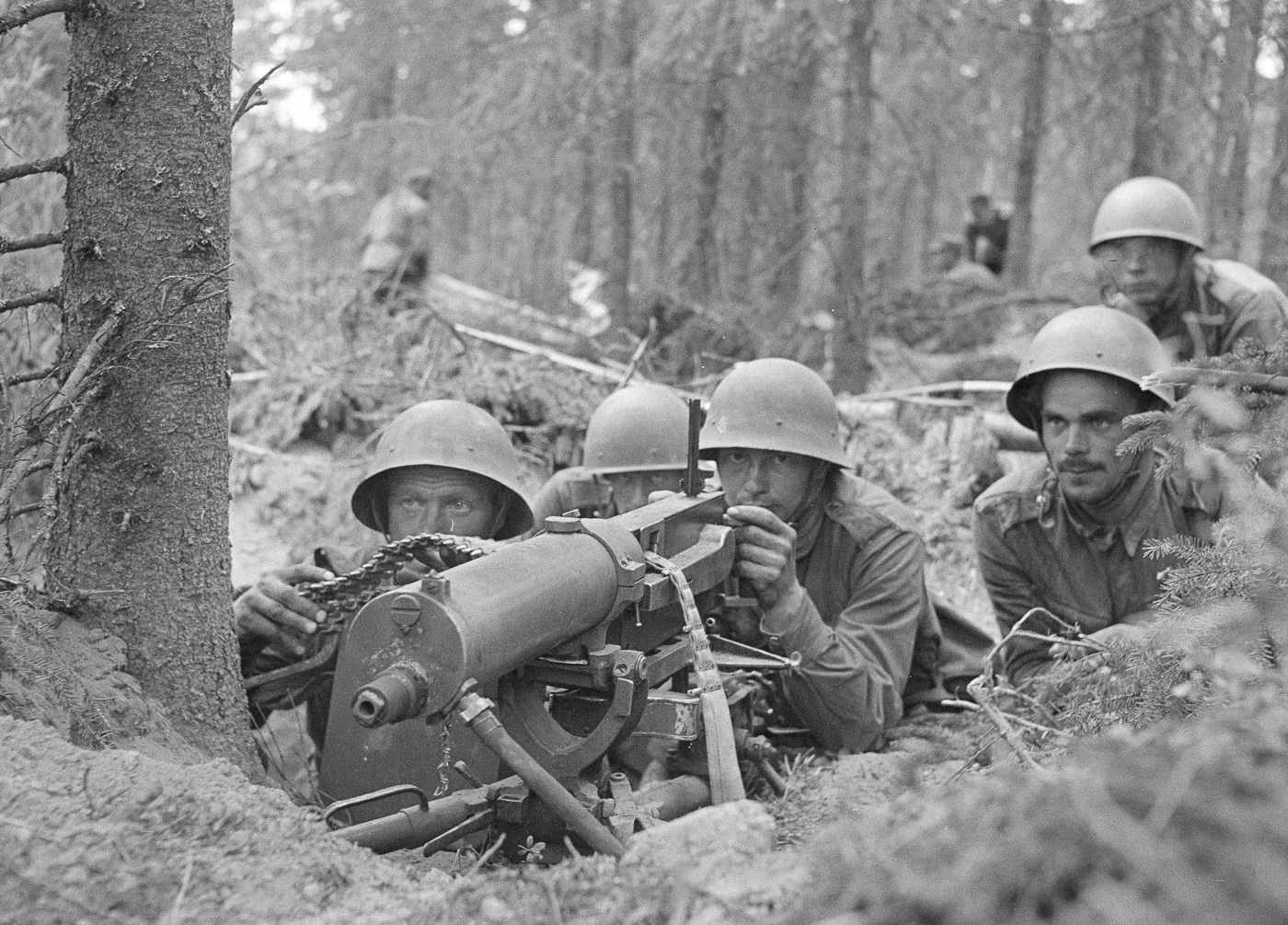
Yet, while the Finnish arms industry successfully developed what was arguably among the best and most robust submachine guns of the Second World War with the Suomi KP/-31, the standard heavy machine gun employed by Finland during the Winter War, the Continuation War, and the Lapland War remained the water-cooled Maxim.
Russian Maxims in Finnish Service
Several factors were at play that led to the Maxim being retained as the primary heavy machine gun – notably the fact that Helsinki expected to be on the defensive in any future conflict, while its sole enemy was expected to be the Soviet Union. Efforts were made to develop more compact lighter weapons, but the Maxim seemed well suited to a defensive war.
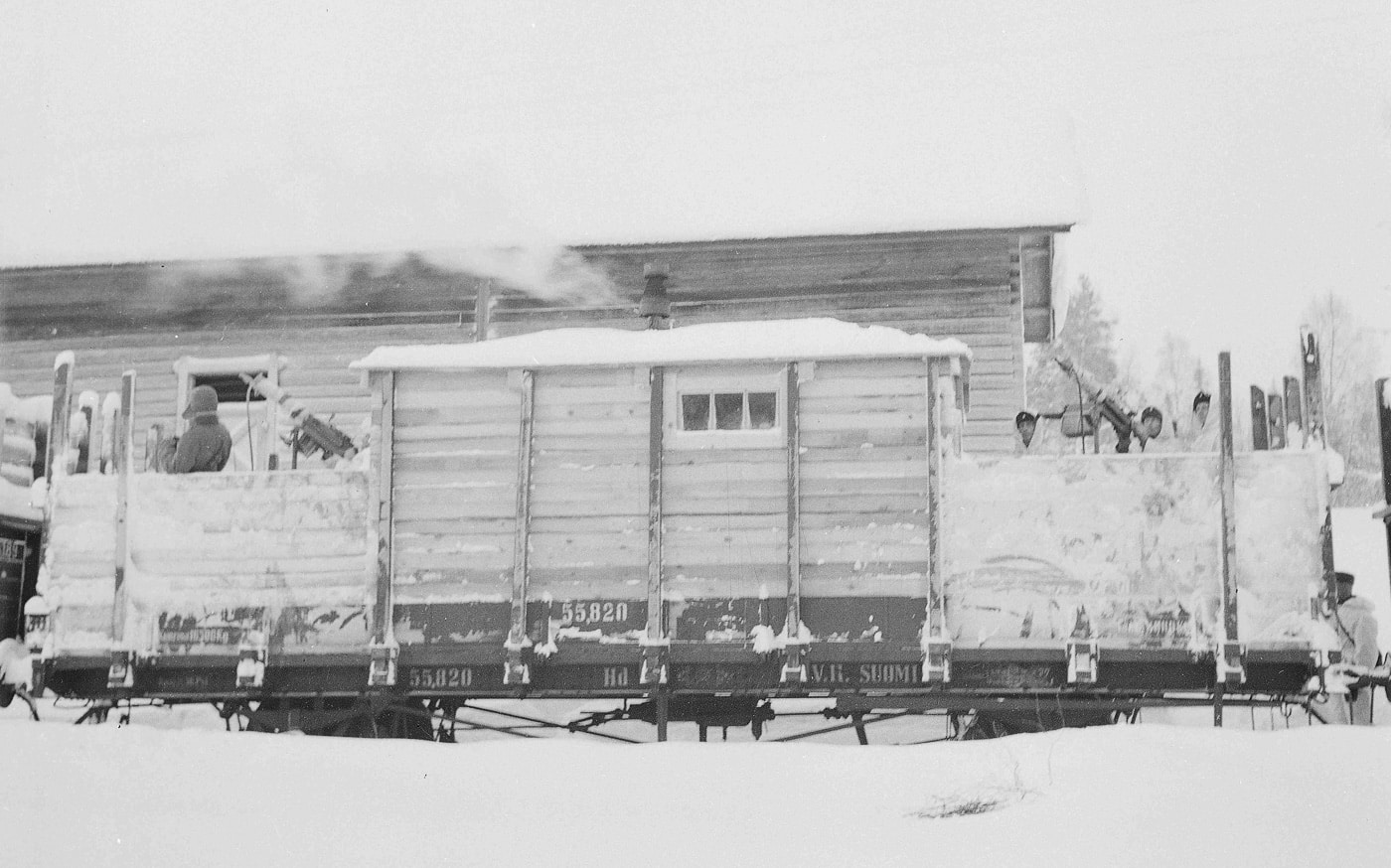
Then there was the fact that the Finnish military’s arsenal was well stocked with Maxims and other World War I-era machine guns.
Finland had “inherited” hundreds of the heavy machine guns, and these included significant numbers of the Russian Maxim M1905 – also known as the Pulemyot Maxima M1905 – and even greater numbers of the PM1910. Both models were produced at the Tula Factory, and were mounted on a distinctive and sturdy wheel mount that had been designed by Aleksandr Alexevich Sokolov – and today is known to collectors and firearms historians as the “Sokolov mount.”
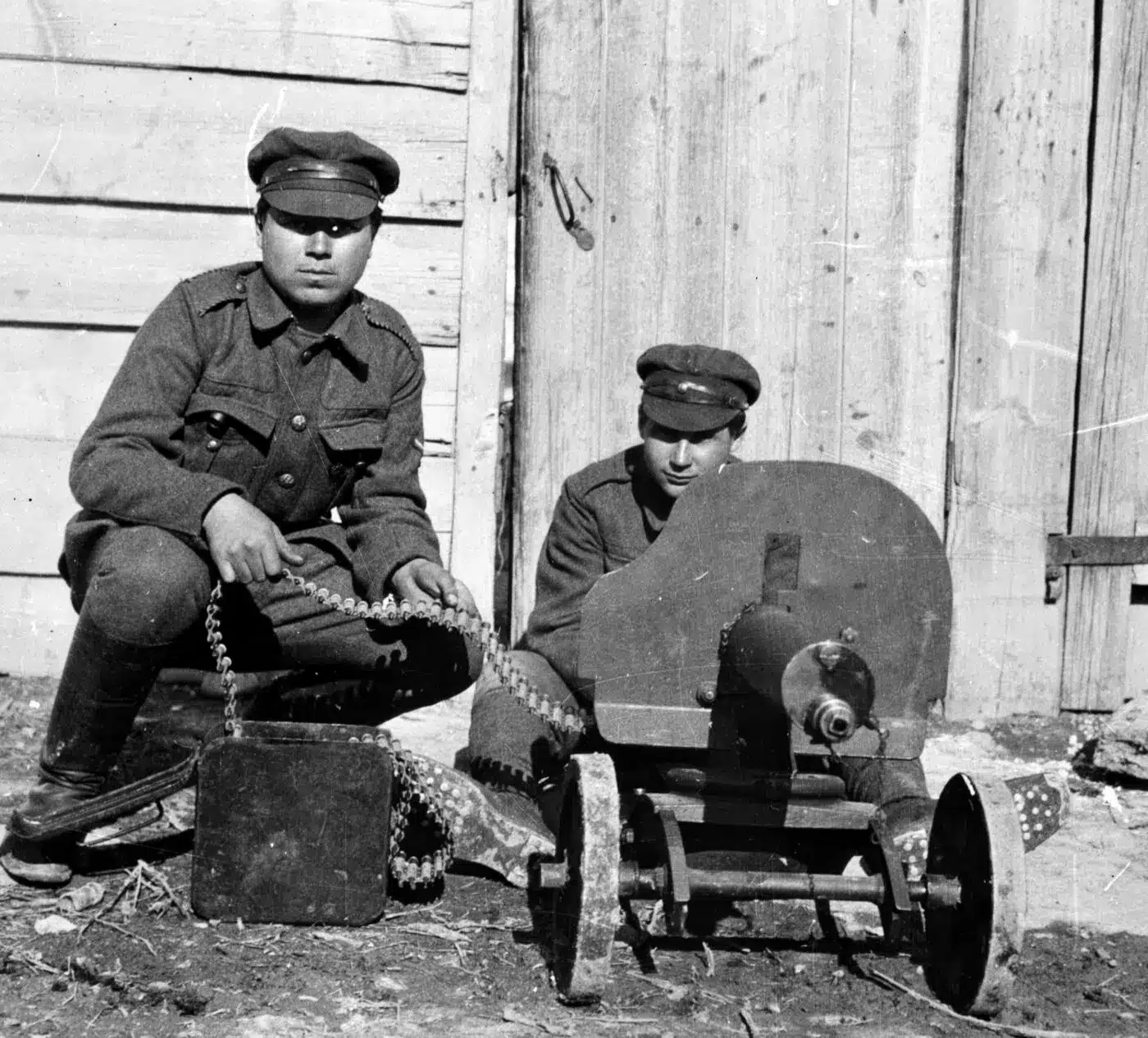
It proved to be a stable firing platform, but more importantly, it provided mobility for the water-cooled machine gun. Even a single soldier could pull the gun, while for greater distances a crew could tow the gun via a rope. By contrast, the German MG08 (another Maxim derivative) required at least two, and ideally four, men to carry on its sledge mount – while the British Vickers was typically mounted to a tripod that weighed more than the gun. Mobility was largely out of the question with those other water-cooled machine guns, although the Germans sought to solve the problem with its MG08/15, which featured a buttstock, pistol grip, and bipod.
Truly a Heavy Machine Gun
For use in snow and ice, the Imperial Russian Army replaced the wheels on the PM1910’s Sokolov mount with skis, but it worked better in theory than in practice. An issue was its weight and early mounts made of brass with wooden wheels and extended legs that could allow it to fire over parapets meant that it tipped the scales at 110 pounds. Even the later simplified mounts still weighed around 80 pounds. Though attempts continued to further abridge the mounts, the PM1910 continued to employ the basic wheeled system through the Second World War, and some were still in use by China’s People’s Liberation Army (PLA) throughout the Korean War.
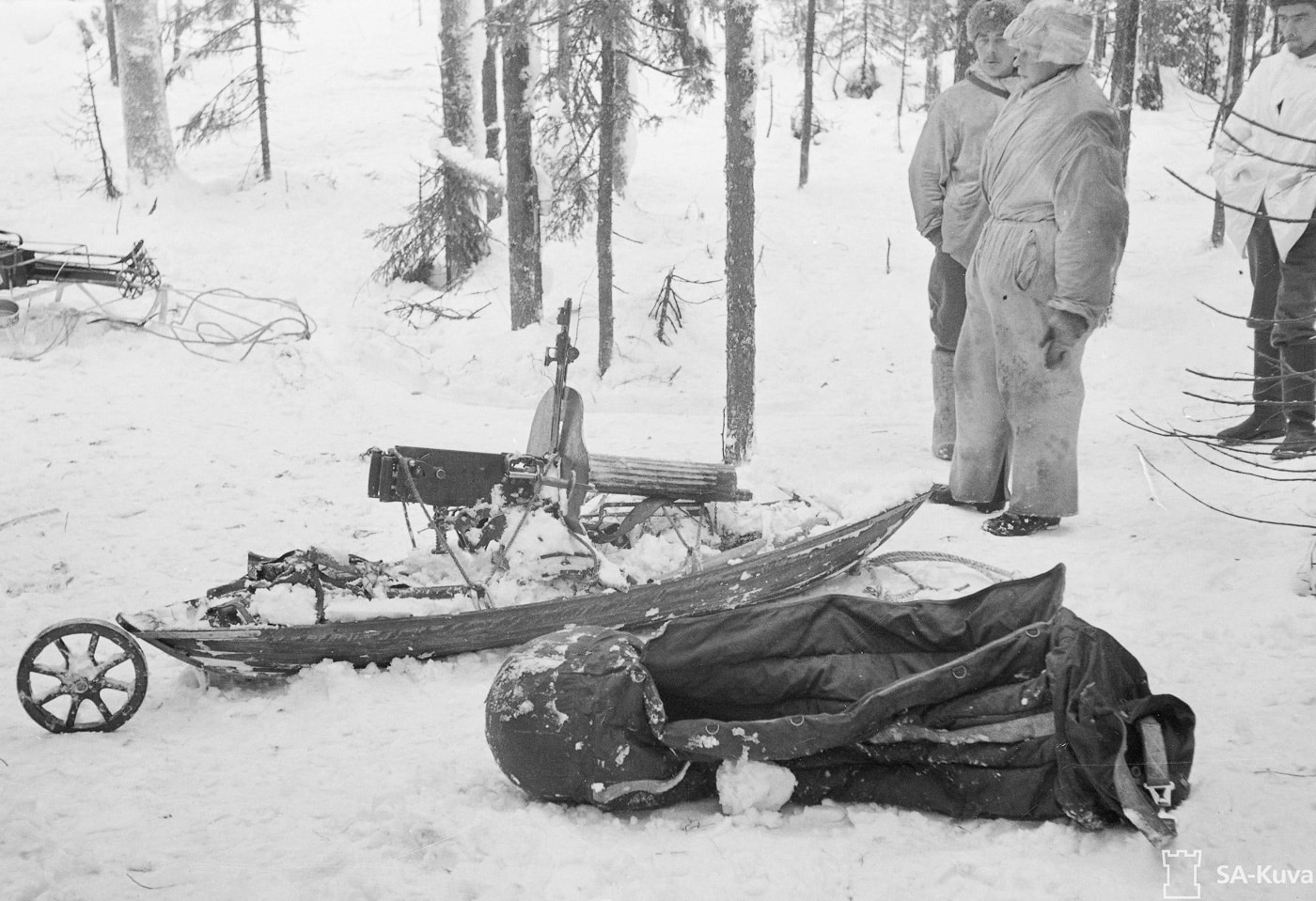
During the brief Finnish Civil War, which lasted from January to May 1918 and ended with the defeat of the Finnish Reds (who were supported by the Soviet Red Army), both sides employed the PM1905 and PM1910 Maxim machine guns. Those heavy weapons remained in use throughout the Interwar era and several hundred were still in service during the Winter War of 1939-40 when Finland defended its homeland from the Soviets.
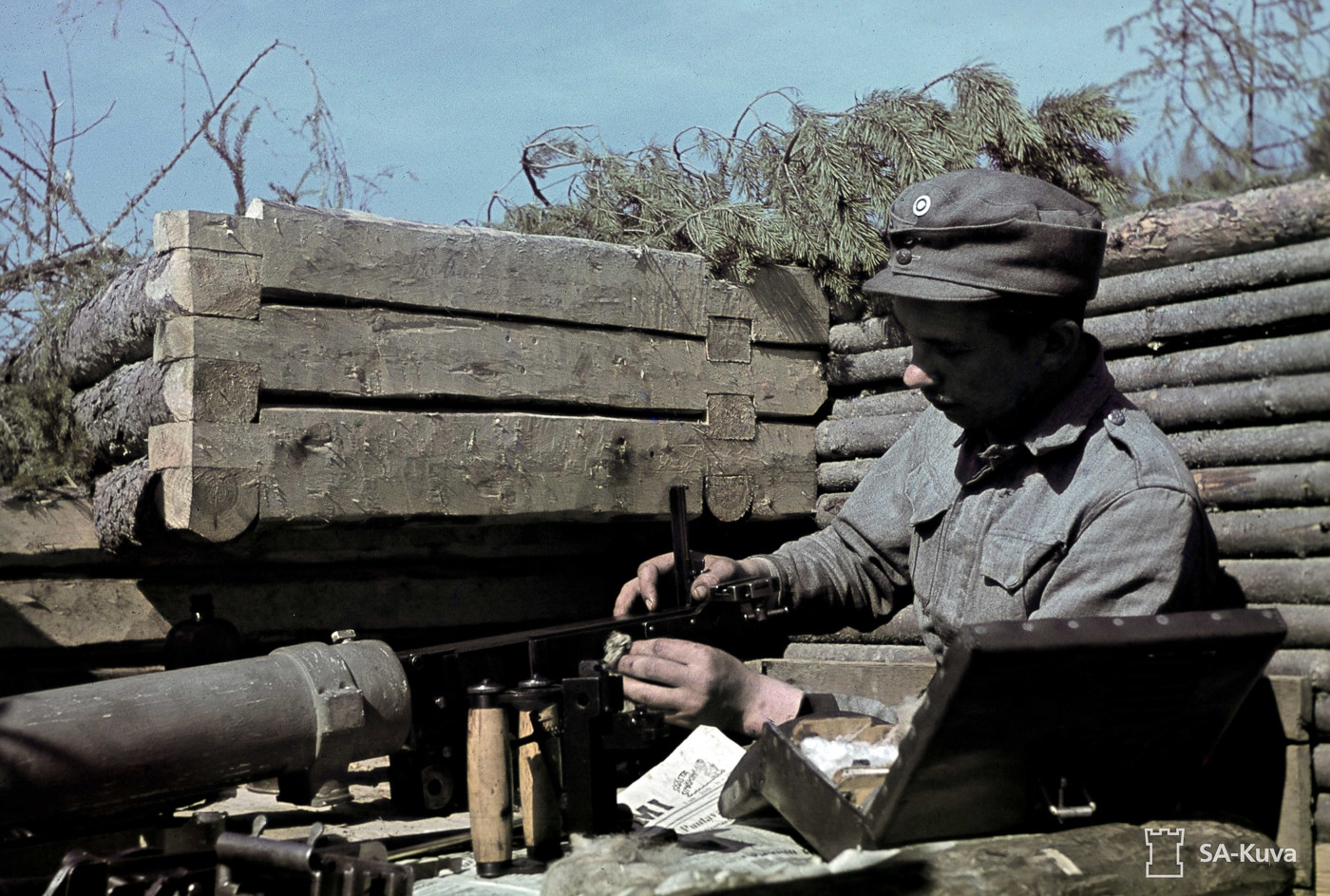
The aging machine guns continued to see service in the Continuation War against the Soviet and the Lapland War, when Finland sought to drive out its former German allies from Finnish territory.
First Step – a New Tripod
Though nearly all of the Russian Maxims were fitted with the Sokolov mount, it wasn’t favored by the Finnish Army. It may have been ideal on flat open terrain, but it proved impractical in the woodlands of Finland. Even with the skis instead of wheels, it was found to be difficult to move in deep snow.
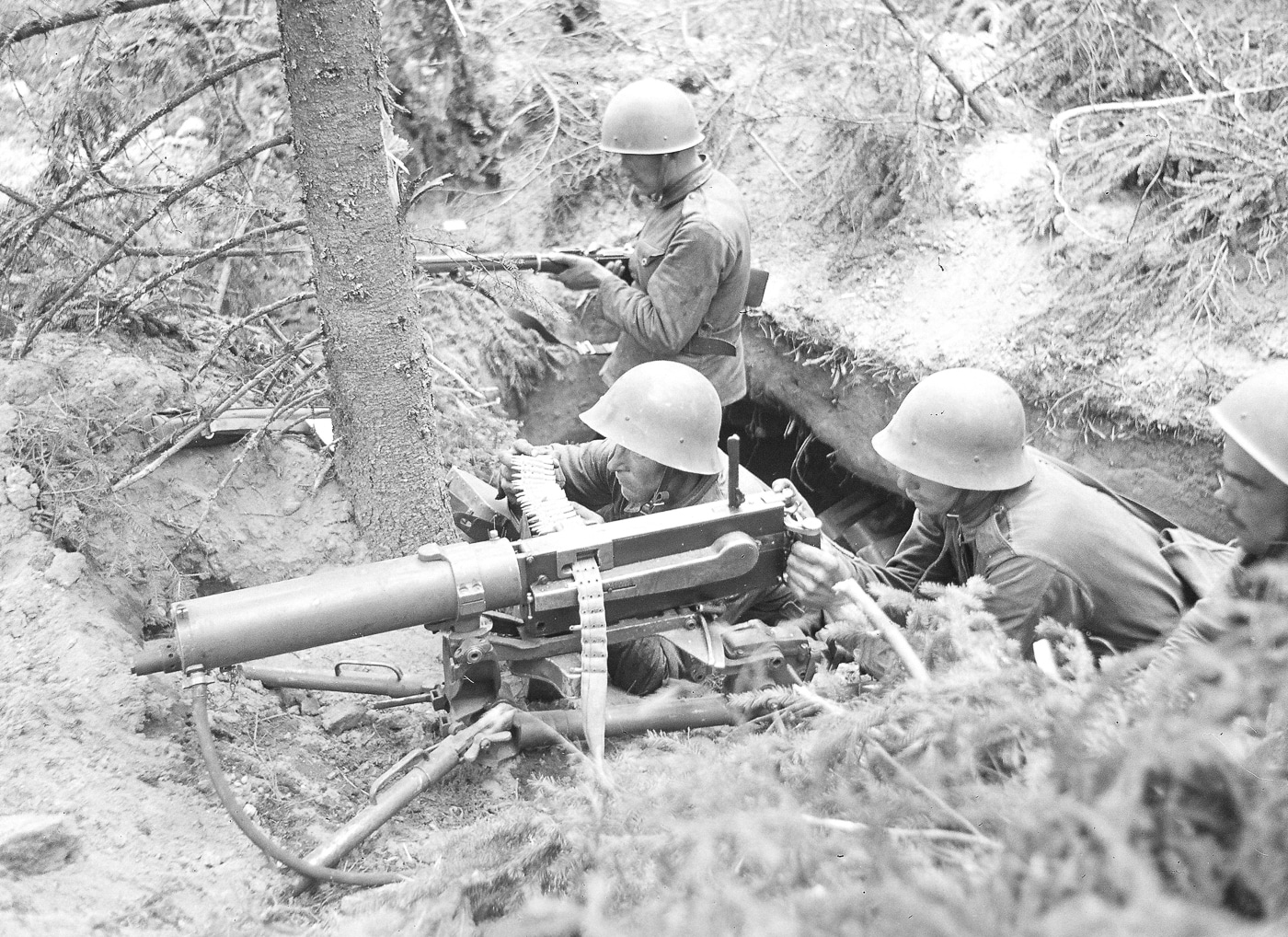
During the Finnish Civil War, it was found that the Maxims were largely used in a defensive role and there was little need for the greater mobility offered by a wheel mount. Instead, a more robust tripod was required.
After the war, initially, existing stocks of the PM05 and PM10s were simply mounted to a new tripod that was developed in 1921. It was not exactly an original design, however, as it was actually derived from a mount produced by the Deutsche Waffen- und Munitionsfabriken Aktiengesellschaft (German Weapons and Munitions public limited company) for its MG09 – the expert model of the MG08.
The tripod mount could fold for ease of transport, while it also had metal carrying handles on each of the two front legs.
Improving the Russian Maxim
The Finnish military didn’t stop with just an improved or more compact tripod. Instead, efforts were made to refine the PM10, and it incorporated a number of manufacturing modifications that included a simplified gunsight, which changed the sight measurements to the metric system.
The modified gun was then designated M/09-21.
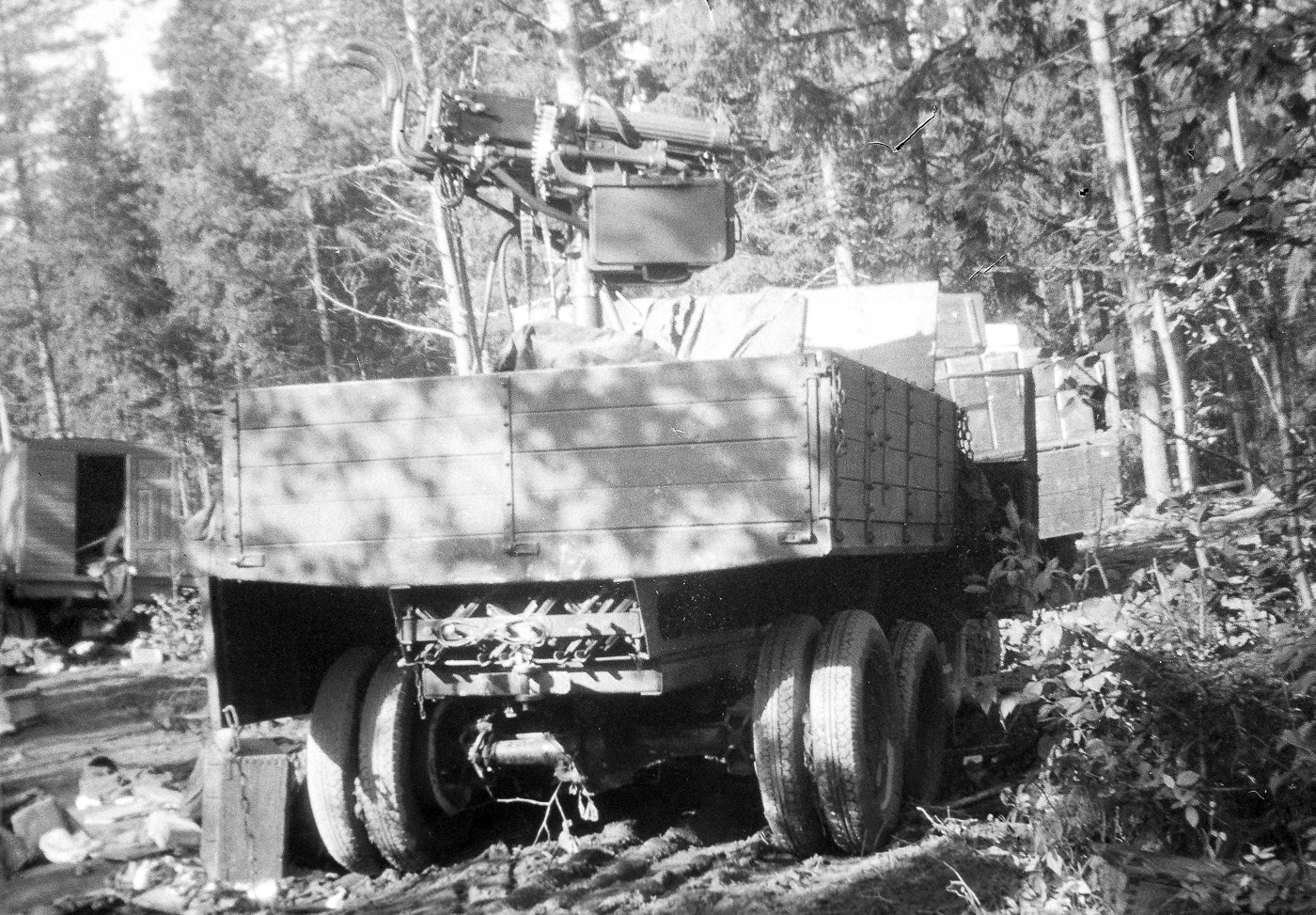
Production began at the Tikkakoski factory, and several thousand were produced in the 1920s. The facility was noted for also rebuilding Russian Mosin-Nagant M1891 rifles as the M27, while it also produced the Suomi KP/-31 submachine gun.
The Final Finnish Derivative
Though the M/09-21 was seen as a marked improvement over the PM1910, in 1931, the famous designer Aimo Lahti (often described as the John Browning of Finland) was tasked with developing a new metal ammunition belt to replace the old cloth belt, which was limited to 250 rounds and slowed down the gun’s rate of fire.
Though Lahti was able to quickly design such a metal ammo belt, and it immediately went into production at Tikkakoski, the self-taught firearms designer went a step further and further improved the Maxim gun. Gun historians have suggested that the result was possibly the best Maxim design ever.
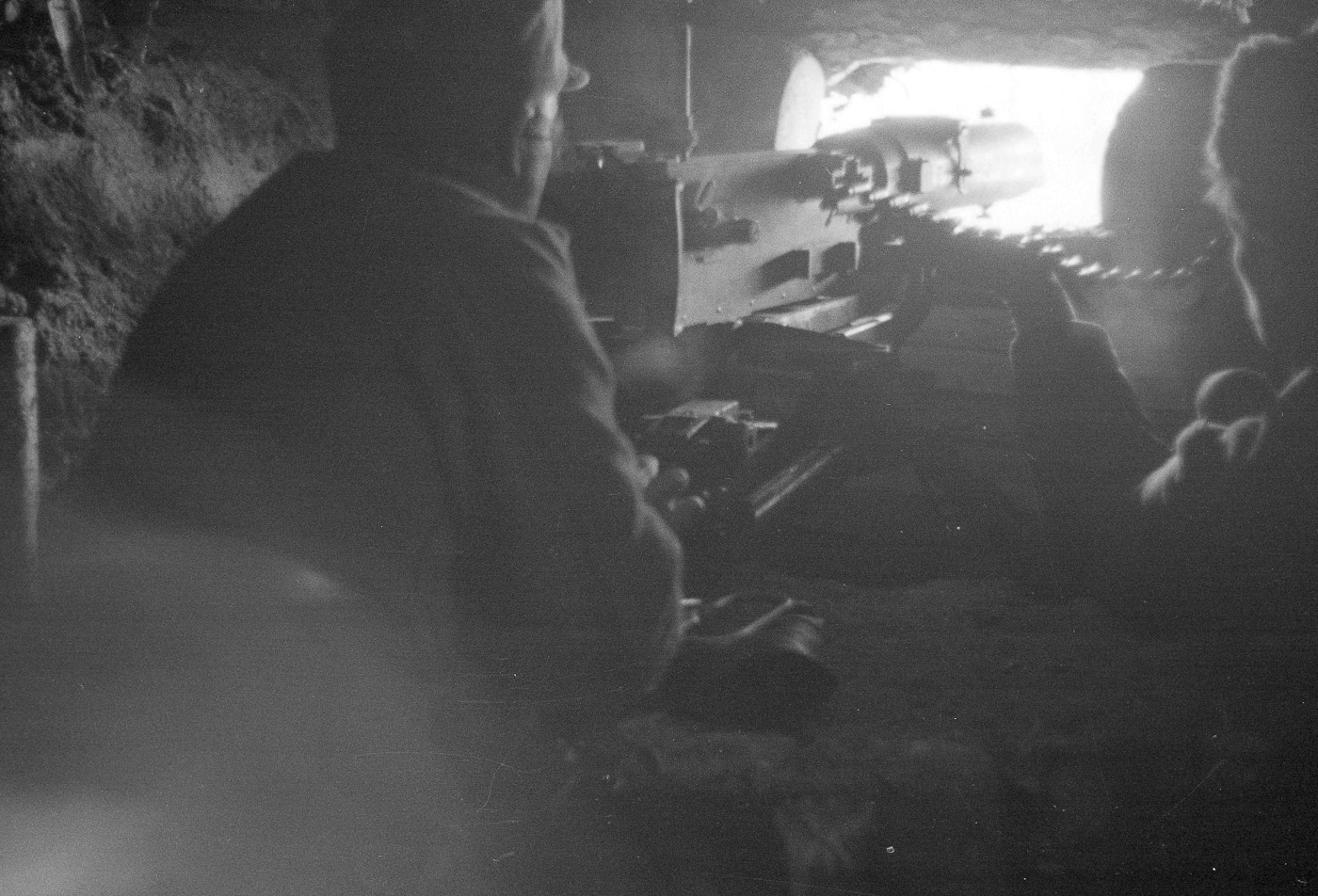
It had a rate of fire of 850 rounds per minute, which was accomplished through improvements that included an accelerator mechanism and muzzle booster. It featured better-quality grips and upgraded rear sights. It was also noted for an even further refined new tripod designated M/33.
Hence, the designation for the improved Maxim gun and tripod was M/32-33.
Unlike the other Finnish Maxim machine guns, the M/32-33 was actually designed from the outset to be suitable for anti-aircraft use, and the tripod was designed with extra legs that allowed it to be easily converted to an anti-aircraft mount.
During the Continuation War, several light mounts were also tested and these again included skis that could allow the Maxim gun to be pulled through the snow. These were produced at the State Rifle Factory in small numbers – with possibly as few as 100 or so manufactured during the war. The effectiveness of the light mounts was questionable at best.
However, the final change to the gun was in the water jacket – and it proved to be a simple but truly game-changing innovation.
It featured a large hole with a hinged cap that resembled the top of an automotive radiator of the era. This allowed for quick refilling with water, but also could be used in winter conditions where soldiers could literally pack in snowballs!
It meant that in the winter, the Finnish soldiers no longer needed to carry the 3kg of water during the winter, and instead could haul additional ammunition. It proved to be such an effective modification that it was copied on the final models of the Soviet-made PM1910.
Legacy of the Finnish Maxim
Some 300 older Maxims were converted to the new configuration between 1933 and 1935. That work was carried out by Asevarikko 1 (Weapons Depot 1). Beginning in 1936, both Asevarikko 1 and Tikkakoski began producing new M/32-33 guns, but only around 900 had been manufactured by the end of the Continuation War in 1944.
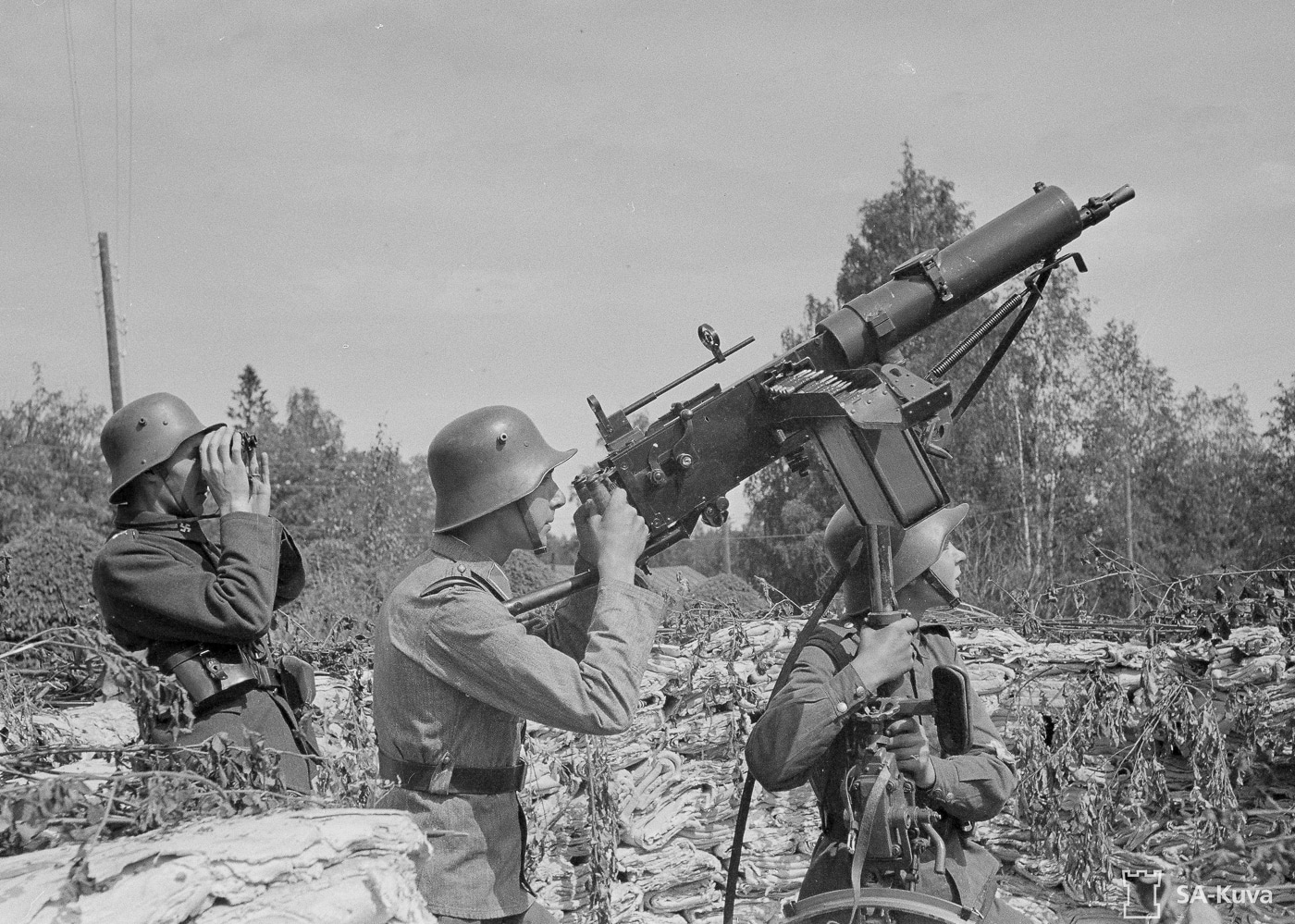
As a result, fewer than 1,200 in total were manufactured between 1933 and 1944.
For machine gun collectors, the Finnish M/09-21 is considered quite rare, and it is unknown how many survived the Second World War. According to a few sources, only 563 surviving M/32-33 machine guns were listed in the 1951 Finnish Army inventory.
Neither the M/09-21 nor the M/32-33 have made much of an impact in pop culture, with each appearing in only a handful of films – yet the greater legacy is how the weapons were used to such a great extent in the wars against the Red Army.
Editor’s Note: Please be sure to check out The Armory Life Forum, where you can comment about our daily articles, as well as just talk guns and gear. Click the “Go To Forum Thread” link below to jump in and discuss this article and much more!
The post Finnish Water-Cooled Machine Guns — From the M/09-21 to the M/32-33 appeared first on The Armory Life.